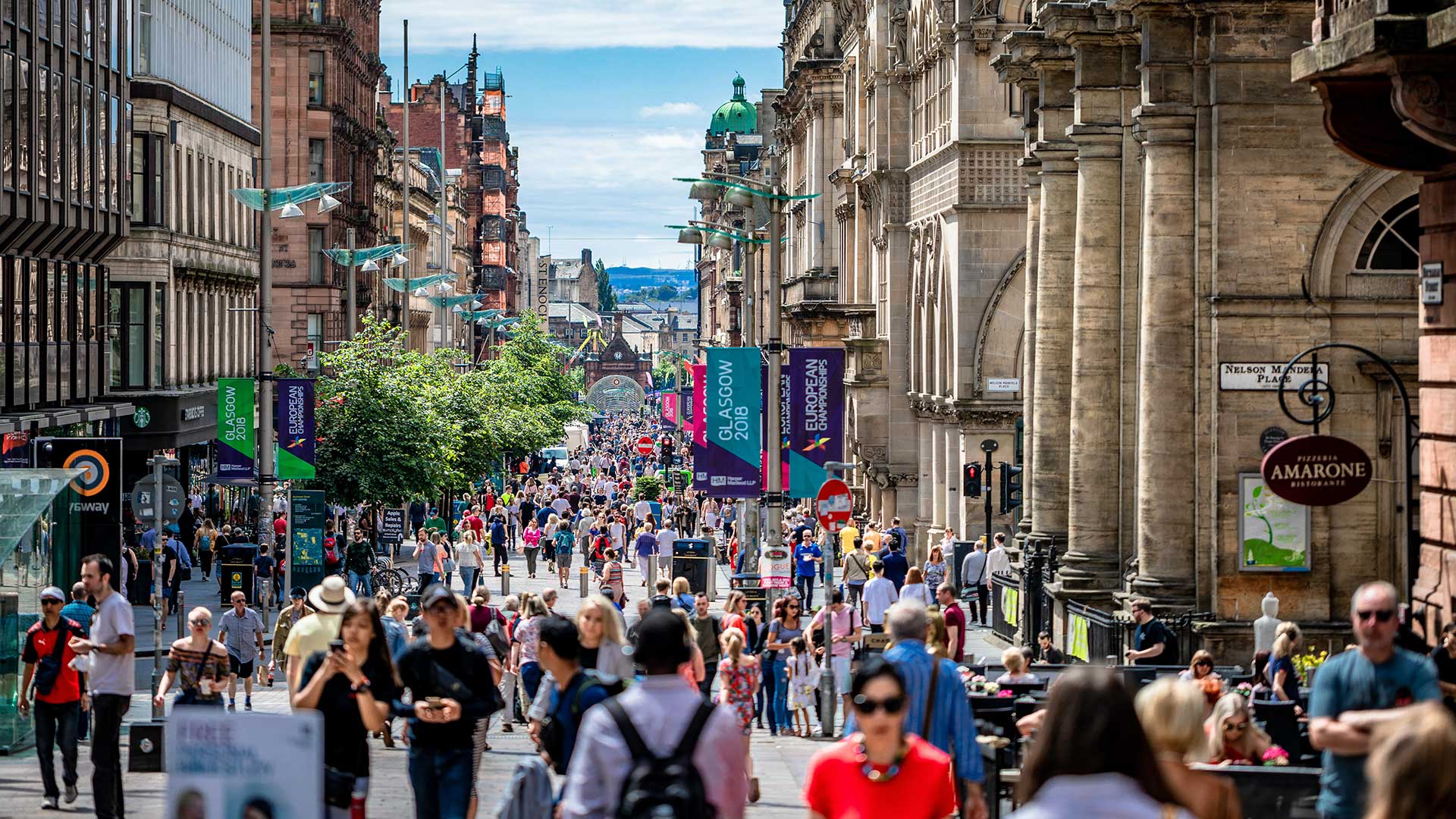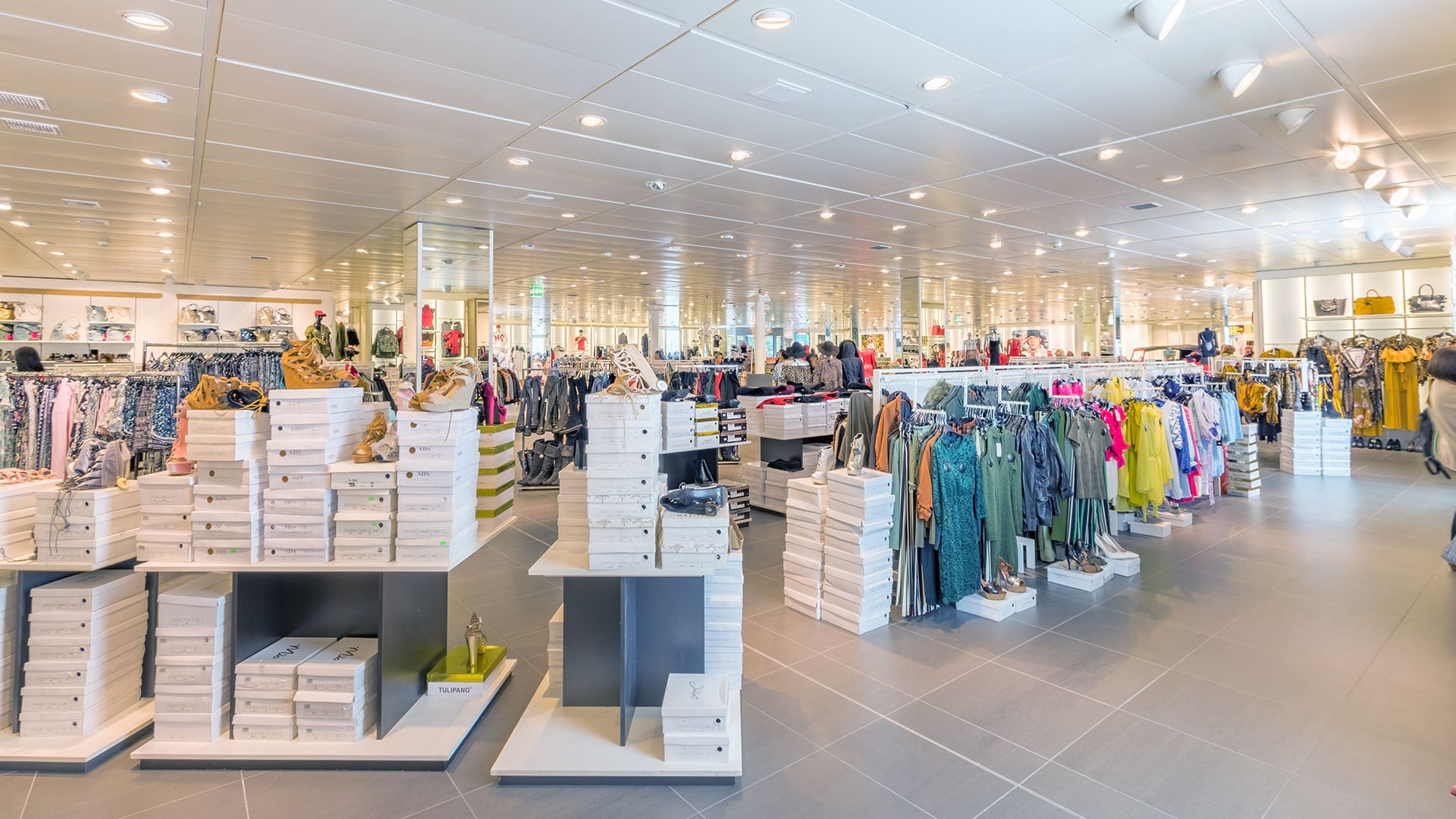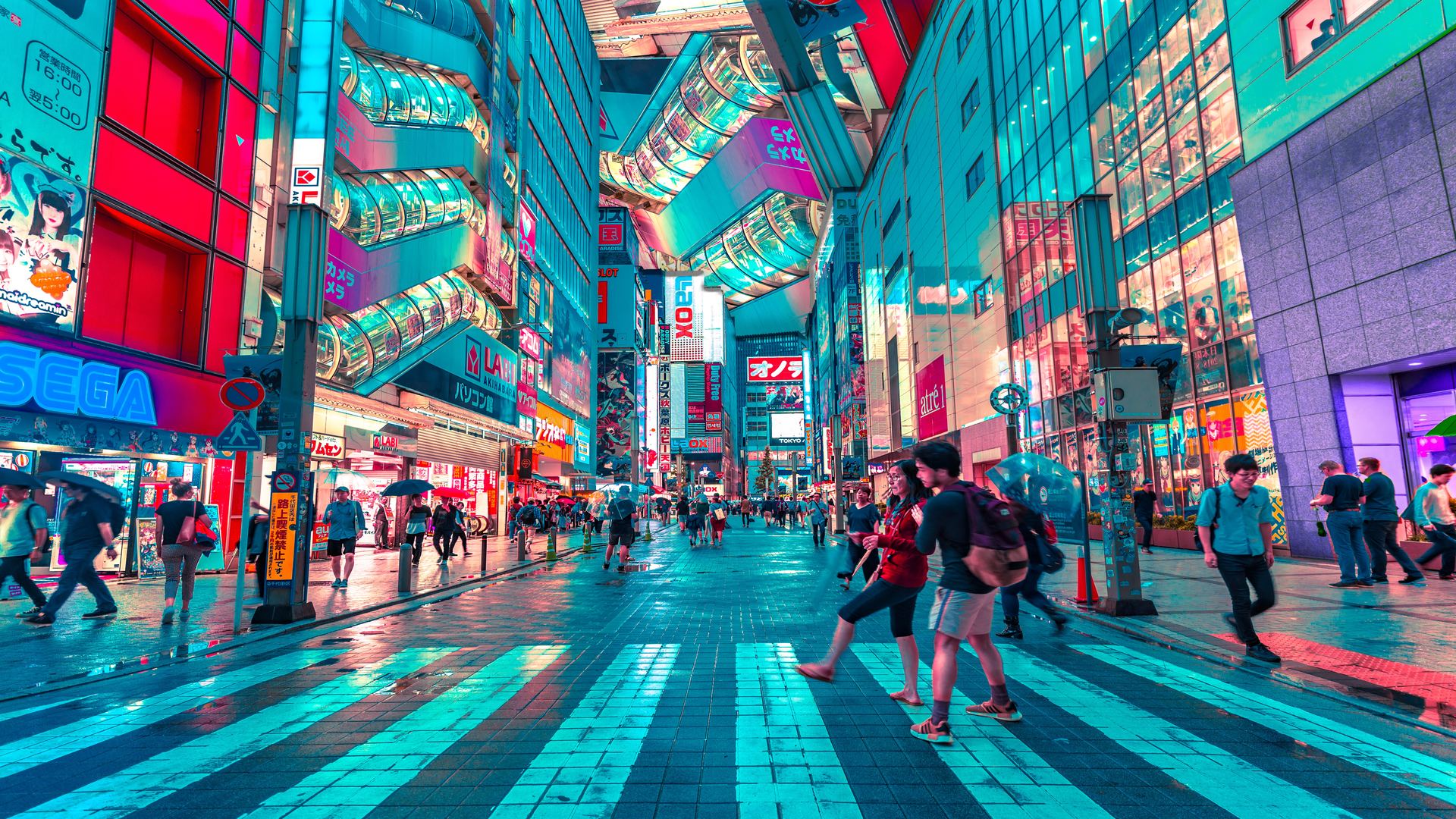Editor’s note: As global distribution operations manager at Daniel Swarovski Corp., Richard Bezuidenhout has developed a location technology platform that helps drive sales improvements for Swarovski around the world. Here he offers his perspective on a trying time for retailers—and the opportunities lurking amid the uncertainty. (For an update on this article, including seven steps retailers should take post-COVID, visit Swarovski’s 2021 WhereNext article.)
2020 has probably been the toughest year for brick-and-mortar shopping in modern-day history—and we’re still sorting out the full economic toll of the COVID-19 pandemic on retail business.
IBM’s annual US Retail Index study suggests that COVID-19 has effectively accelerated the shift to e-commerce by five years, boosting some businesses while nearly bankrupting others. Mall-based retailers, already limping due to department store struggles, saw earnings drop a stomach-turning 256 percent in 2020’s second fiscal quarter, according to Retail Metrics.
Other businesses—from grocers to home exercise brands like Peloton—have been unexpectedly overwhelmed with demand. Those with strong e-commerce strategies in place, or the ability to quickly pivot and deliver an omnichannel experience across stores, online, and social media, were poised to reap huge rewards. Amazon posted its biggest profit ever this summer, with 40 percent sales growth over the previous year; Walmart’s e-commerce leapt by 97 percent. Overall, online buying was up 45 percent year over year.
In light of these sweeping changes, a retail executive might be tempted to rip up the roots of their business model and institute hasty reforms. The wiser approach is to analyze granular details about customer preferences and remain agile in responding to them. Retailers who act on location-rich data to place products where customers are, then personalize the shopping experience to suit new habits, will withstand the COVID-19 disruption and excel in the postpandemic era.
The Brick-and-Mortar Challenge: Meeting Customers Where They Are
Location intelligence—business insight derived from analysis via a geographic information system (GIS)—is central to this effort. Location technology can highlight microtrends specific to one city avenue where a shop is located, or industry-wide changes that shape an entire national network.
With smart maps, business leaders can zoom in to a region or city and take the temperature of stores there through indicators such as customer relationship management (CRM) data, survey data, and demographic information. By juxtaposing those layers with data on online advertising efforts, for example, they can pinpoint where to deploy email blasts alerting loyalty group members to deals on in-demand products, tagged with current inventory numbers.
For a broader view, executives can use a GIS-powered dashboard to gauge the status of hundreds or thousands of stores coast to coast. A color-coded system showing which stores are closed, open, or partially operating—overlaid with state and local business restrictions—can guide decision-making about how to readjust the flow of supply chains or where to reduce or expand the brand’s footprint.
By analyzing data in a way that spreadsheets or PDFs can’t, location-savvy businesses can stay agile and develop techniques to serve them and their customers well in the post-COVID-19 retail era.

Today, it's much more data and analytics-driven than in the past. … You can do much better if you look at the data because you have a much more tailored approach toward the consumer.
The New Climate of Shopping
To paraphrase the 19th century American writer Mark Twain, reports of brick and mortar’s death are greatly exaggerated. There’s no question that consumer attitudes toward in-person shopping are changing drastically, and may never to return to “normal.” For example, the fashion retail brand Inditex, which owns Zara, plans to close up to 1,200 stores by the end of next year. Many empty, darkened boxes in malls and shopping centers may not see another retail occupant again.
Yet one of the insights of omnichannel commerce has been that physical stores do not cannibalize online sales, or vice versa. In fact, one can contribute to the other quite dramatically. An analysis of consumer credit card transactions from 2016 to 2018 found that a customer who spends $100 online will likely spend another $171 in store within the next month. By the same token, an individual who spends $100 in store will on average spend $163 online in the following 30 days.
There is still a primacy to brick and mortar that can’t be entirely replaced by a website, since stores evoke experiences and sensations that a website can’t. And certain products—like jewelry—benefit from a venue where they can be handled physically. But each brick-and-mortar location must evolve if it expects to engage more meaningfully with customers—becoming an experience hub rather than simply a point of sale.
Shoppers tend to spend more in stores than online as brick-and-mortar locations are more likely to catalyze spontaneous purchases, especially at a time when consumers are limiting trips out of the house. In store, customers are exposed to an array of merchandise that can be a chore to slog through in an online catalog.
Still, savvy retail leaders know the challenge isn’t to pit one mode of customer engagement against the other, but to weave together online and offline marketplaces in a coherent and meaningful omnichannel experience. Now more than ever, executives need to analyze location-specific data to understand who walks into a store and who walks by, determining how to draw that person in.
Upgrading a Location Strategy
With coronavirus infection rates and business rules varying significantly by state and country, a store’s location now has a heightened effect on its success and even its solvency. Agile retailers are analyzing catchment areas in an effort to cope.
Ideally, retailers will employ a location strategy that is two steps ahead of where the virus is trending, allowing for swift changes. A store in Germany, where COVID-19 has generally been handled well, may need to be able to contend with shoppers willing to wait in lines outside. That same brand may need an entirely different approach to a store in New York City, which has been slow to return to normal levels of retail activity.
On a local level, this calls for a reassessment of catchment areas with the help of GIS technology, which can show how pandemic-related trends in pedestrian movement may be hurting or benefiting certain stores. As people change their daily routines to limit exposure and businesses embrace remote work and less office space, customers may no longer be where they’ve traditionally been. For instance, stores in financial districts that once relied heavily on shoppers from the commuter workforce now must adapt to new patterns.
Our own analysis of catchment areas shows higher footfall traffic and store traffic in small towns and smaller outlet centers than on main shopping avenues, where customers might formerly have spent a day. In response, retailers with slower high street locations can use location technology to analyze buy online, pick up in store (BOPIS) opportunities (also known as click and collect) in those outlets, while raising staffing levels and instituting stronger sanitation procedures in suburban locations that are seeing more business.
Innovative retailers using location intelligence won’t limit themselves to just in-store adjustments, either. For example, with normal exercise routines disrupted, runners have been clogging parks and riverside paths, creating new advertising opportunities for fitness retailers. Small details mined from location data can end up having a profound impact on a brand’s health.
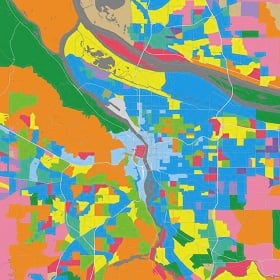
If you look into the details, you'll see clearly the differences between parts of the city, and we start to adjust our assortment according to the demographics.
The Importance of Being Mobile
Some innovative retail brands are responding to the reality of COVID-19 by quite literally putting their wares where customers are—with pop-up stores, even operated out of trucks. It’s a trend that is likely to continue once the pandemic retreats, and a select group of retailers are perfecting it now. In India, denim companies like Pepe Jeans and Levi Strauss & Co. have responded to deadened traffic at traditional shopping centers by sending retail trucks out to residential areas. These mobile shops are equipped with comfortable work from home garments now in vogue, and can take customer measurements and arrange for items to be delivered after modifications. It’s the kind of agility and location awareness the moment calls for.
One of the most important steps a retailer can take amid these tightened economic circumstances is simply to make sure the right products and in-demand items are in the store. Best sellers should be right where shoppers can see them, and popular secondary items like accessories should also be close at hand. It’s an important retail technique that will outlast the pandemic—and one that can vary markedly by store location. Retailers can find other opportunities to connect with customers by analyzing stores with high click-and-collect rates. Merchandise planners can determine which products are often shipped to those locations and identify a complementary product in store. Based on that information, on-site staff can show the complementary product when the customer collects the order.
Indoor location intelligence can play a supporting role. Typically used for maintenance management, HR planning, and security, GIS-powered indoor monitoring can help meet density regulations by tracking how many customers are in a store at a time, while also pointing to helpful data like which aisles or showcases are hotspots of activity. That might provide store managers clues about where to position attention-grabbing products. The technology can connect with mobile apps to help consumers navigate through a large store to the item they’re seeking, increasing safety and comfort for customers nervous about in-person shopping.
A Reshaped Retail Footprint
While many retail closures in recent months have been unavoidable, it would be a mistake for executives to retreat or panic without first studying the data. In many cases, removing a store means a brand is out of sight and out of mind for customers, actually leading to a loss in online sales rather than a gain.
For executives to fully understand the role, revenue, and potential shortfalls of each location, a GIS-enabled dashboard is essential. A smart map of this kind—relied on by retailers such as Walmart and Bass Pro Shops—can guide business leaders through difficult decisions about whether to shutter a store, or perhaps even open a location in an area of rising demand.
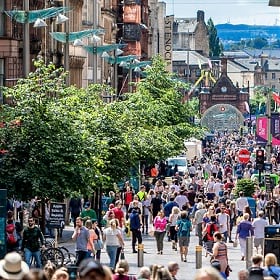
Brick and mortar is a super-strong element to build the brand, to communicate with the consumer, to show your brand in a different way. … It is important to have both channels, and we know there is a halo effect from offline to online.
Getting Personal while Staying Remote
Personalization is also a key strategy to staying competitive in the age of COVID-19 and beyond, and it requires the kind of granular customer understanding that location intelligence supplies.
For example, a brand initiating an in-store sale or new pop-up experience will want to share that news with customers in the area. Adding a personalized detail to an email—pointing out that the store is just a 15-minute drive away and has implemented extra safety measures, for instance—might be the touch that produces new sales and provides the oxygen required to get a brand through the crisis.
Smart retailers also welcome qualitative information as a complement to data analysis. Collecting survey responses from store employees is an easy, low-cost way to assess an outlet in the new retail landscape, and one that can better link C-suite decisions to on-the-ground data. We hear a lot of talk these days about computing at the edge—it might behoove an executive to think of staff members as critical sensors who can pick up important clues at the edges of the physical store network.
An act as simple as having employees answer five or six questions at the end of their shifts can surface microtrends that highly paid consultants might miss. By collecting intel on what times of day were busiest, which products elicited most interest, or what price points people looked for, retailers can sense the shifting winds of commerce in a certain geographic area. More men are doing the shopping in certain sectors now—will they require a higher level of assistance, or does that pose new opportunities for upselling, if they’re not the typical shopper for that product?
Alternately, location intelligence might guide a retailer to tailor staffing to match people visiting the store, hiring a younger salesperson for the days and hours when college-aged customers frequent that location. This type of spatial intel has been part of corporate responsibility plans to increase racial equity as well, as retailers seek to ensure that their stores reflect their host communities.
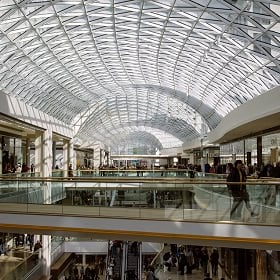
If you don't have the right tools, you're putting your finger in the wind and hoping for the best. Using data, you minimize the risk of having a loss-making store.
Humanizing Retail through Data
In an era of big data, a retailer can choose from many data providers. Reliable information is key to understanding current customer needs and possible future customers. Demographics including age, gender, income, and spending habits can be linked by GIS technology to a physical location or catchment area, helping brands identify opportunities and define actions.
Data analytics can often seem cold and clinical—but in fact, when data reveals actionable insight, it helps retailers create deeper connections with their customers. In ways both big and small, location intelligence helps brands meet customers on their terms in this unique retail era.
Consider the simple example of two stores in different regions where in-store capacity will rise from 4 customers to 20 next week. A smart map with integrated weather forecasts could reveal that one store will experience winter-like weather while the other will endure heat and humidity.
With that insight, the location-savvy planner can implement small gestures like setting up heaters or handing out cool beverages to make customers feel at home in the world of brick and mortar, at a time when trips out of the house can feel charged with anxiety.
Scale that across a full portfolio of retail locations, and those little things add up to a big difference for customers, giving location-savvy brands a competitive edge in a year of profound uncertainty and beyond.
The Esri Brief
Trending insights from WhereNext and other leading publicationsTrending articles

December 5, 2024 |

July 25, 2023 |

April 1, 2025 |

November 12, 2018 |

February 1, 2022 |

April 16, 2024 |
